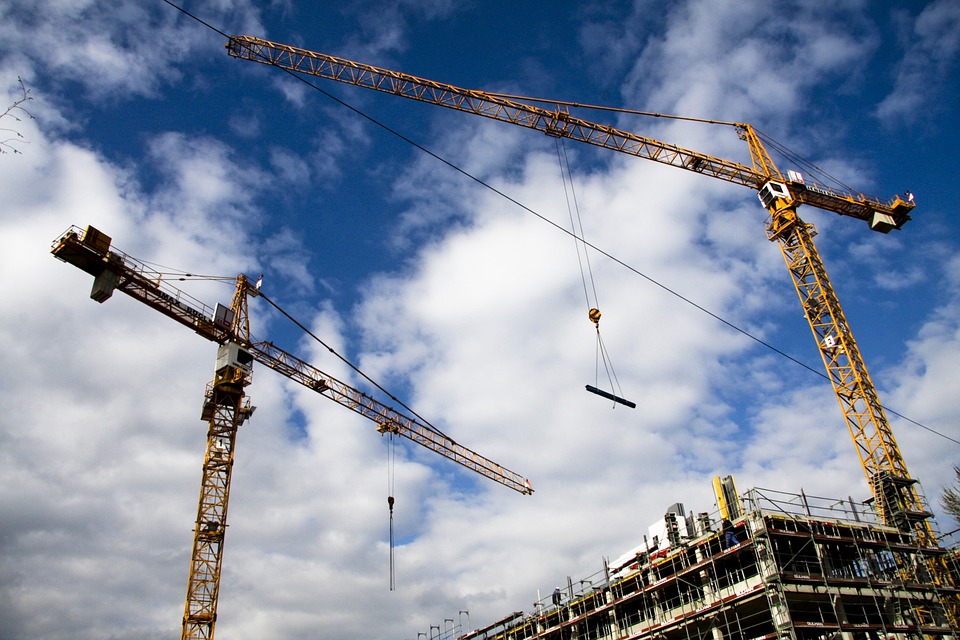Just like some professions are more demanding, some workplaces are more dangerous than others. At the same time, all employers are obligated to ensure the proper safety and security of all their employees; the nature of some kinds of work naturally exposes employees to increased risk than usual. One of these dangerous workplaces is a construction site.
Statistics reveal that in 2019, of all worker deaths, 20% were construction workers. Construction workers are exposed to significantly higher risk than usual daily; since they have to work on heights, rough terrain, dangerous equipment, and electrical tools, there are inevitable hazards.
While all site managers need to implement the necessary protocol to guarantee the safety of construction industry workers, the responsibility also rests on your shoulders. Employees working on construction sites must be just as vigilant and careful about taking the right measures. The following are some useful safety tips for construction industry workers:
- Never ignore your Personal Protective Equipment (PPE).
All work sites that pose any risk require personal protective equipment. PPE is your only defense when all your attempts at steering clear of hazards have been unsuccessful and you come into contact with danger. PPE for construction workers includes full face shields, hearing protection gear, chemical splash goggles, respiratory protection, protective clothing like welding leathers, and fall protection equipment.
Hazards in industrial hygiene include dangerous construction materials, high elevations, electrical hazards, chemical exposure, asbestos, and a lack of ventilation. The only protection you have when encountering any of these is your PPE, so never work on a construction site without it.
- Don’t tamper with equipment
It might be tempting to repair a machine or power tool on your own rather than going through the hassle of getting it fixed; or modifying a tool slightly to work more efficiently. Avoid doing this at all costs. Workers sometimes remove the guards and safety measures that come with construction equipment. They can pose serious risks to your safety.
If you notice any defect in a tool or machine, immediately report it to the authorities and demand proper maintenance. Ideally, all construction site tools should be inspected regularly. You should not attempt to fix any equipment on your own unless you have the competence and approval of authorities.
- Clear the clutter as you go
It might sound ludicrous to expect a construction site to be ‘clean’ when all that comes to mind about such a place is dust, debris, toxic waste, and other discarded construction material. However, it cannot be stressed enough that a construction site must be clear of all unnecessary equipment and hazardous material.
After completing each task, all workers must clear the clutter. They must remove excess building material, wood scrap, and metal, clear away all nails and screws, and never leave unattended power tools or construction machines. Debris and dirt piles pose a tripping hazard and potential threat of injury.
- Always use the right tool for the right task
There is no one-size fits all policy in terms of construction equipment. Each tool is specifically tailored to certain tasks; using them for jobs outside their limits can make things much riskier. Using the right tool in the right place will ensure your work gets done quickly and efficiently.
For instance, only 110V equipment should be used on-site. Using 240V tools is strictly prohibited unless you have prior authorization, and even then, it should be used only as a last resort.
- Ensure chemical safety
If your construction site uses chemicals or hazardous materials, ensure you have access to Safety Data Sheets (SDS) for all the chemicals being used. This information should also be readily available when a worker is exposed to a potentially dangerous chemical, and they should know the right way to handle the emergency.
Ensure your manager gives you proper training in working with each chemical and for each process step, from use to proper disposal.
- Know and follow all construction site safety signs
All construction sites pose one kind of hazard or another, and the use of safety signs for warning employees and passersby is a must. Keep an eye out for these signs whenever you go to an unfamiliar location on the construction site.
There are different safety signs, assigned specific colors, and pictorial representations. Mandatory signs indicate actions that must be performed in a particular place, like ‘foot protection must be worn or ‘head protection must be worn. They are usually represented as black text and blue figures with mandatory action. Similarly, prohibition signs indicate prohibited actions, as black images on a white background and a red circle with a line through them. Warning signs, fire safety signs, and emergency information signs are similarly used on construction sites.
Final words
Construction site safety must be a top priority for employers and site managers. However, it is equally up to you to ensure that you do not expose yourself to any more risk than is necessary. Always wear your PPE, never tamper with equipment, clear clutter, ensure chemical safety, and follow all safety signs. Without proper safety protocols, construction sites are among the most hazardous workplaces.
I am a 26 year old young and witty girl, who simply loves to write and be around her friends. I am the one who believes in filling the heart of her readers with love, passion and contentment.





